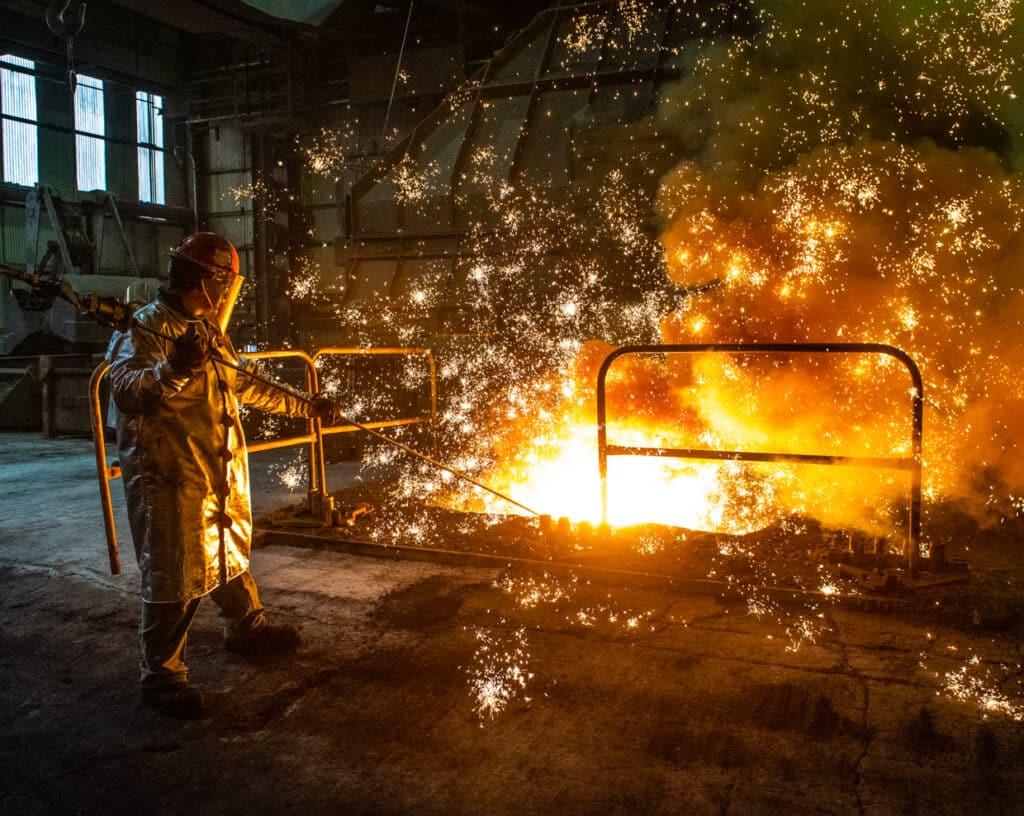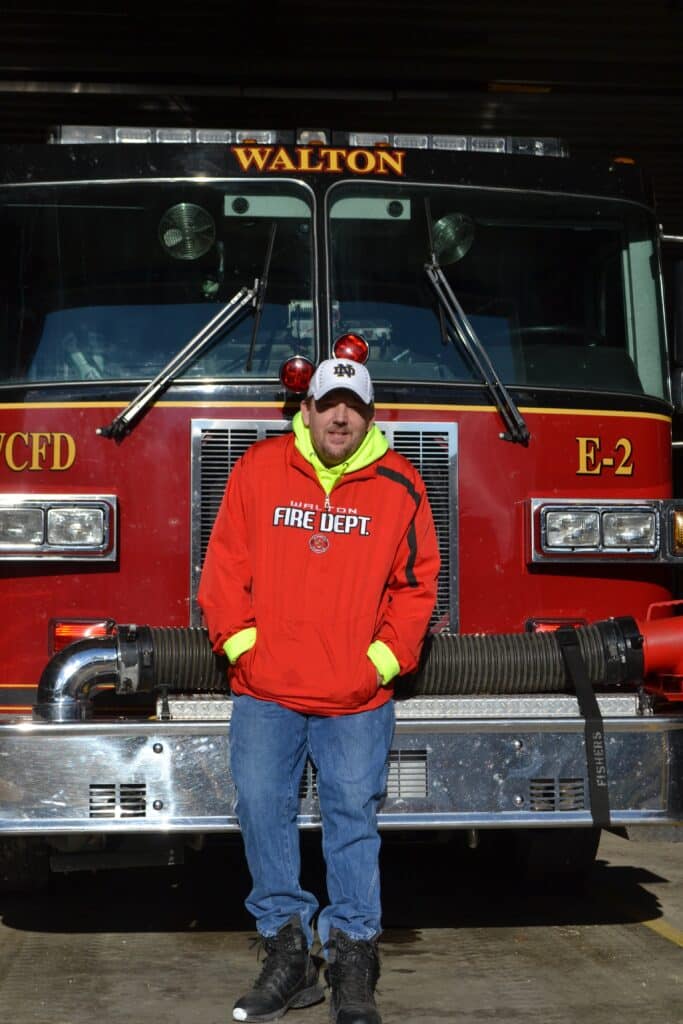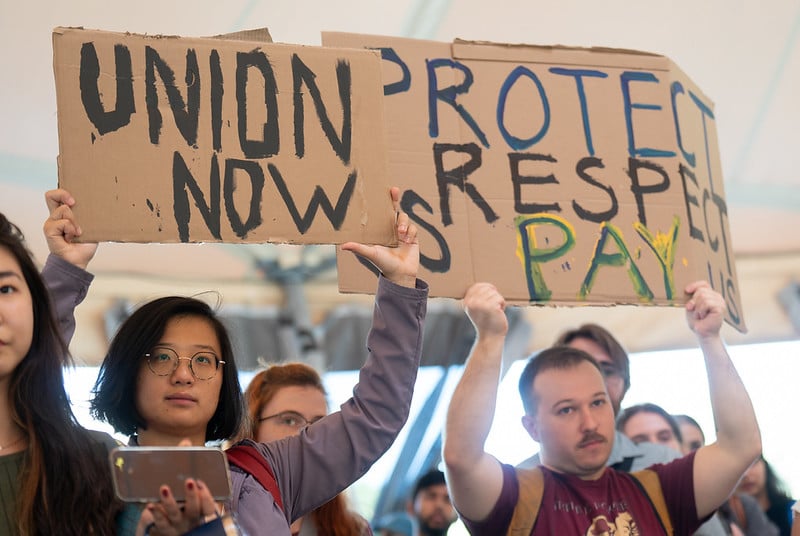
Battling Killer Heat
By David McCall
USW International President
The steel-plate floors “absorb heat and radiate it to no end,” says Keenan Bell, explaining why temperatures in parts of the Bridgestone tire plant in Des Moines, Iowa, regularly soar to 110 or even 115 degrees during summer months.
The sweltering conditions pose a constant threat to the plant’s 530 union workers, who also have to contend with molten rubber and heat-generating manufacturing equipment, all while wearing boots and long pants to protect them from a variety of other hazards on the job.
Bell and other representatives of United Steelworkers (USW) Local 310L monitor the temperature. And when scorching weather triggers a safety alert, mandatory cool-down periods and other special safeguards go into effect.
A strong, vigilantly enforced USW contract empowers these workers to stay healthy and keep each other safe on the hottest days.
All Americans deserve similar protections, regardless of who employs them, what state they call home, or whether they work indoors or out. That’s why the USW, other unions and dozens of professional groups continue advocating for a national standard that would specify the steps all employers must take to protect workers from record and increasingly frequent heat waves associated with climate change.

The U.S. Occupational Safety and Health Administration (OSHA) last year proposed a standard but hasn’t yet adopted it, even though heat contributes to tens of thousands of sicknesses and injuries annually.
Since 2011, it’s also contributed to the deaths of at least 479 workers, according to the American Public Health Association, an advocacy group in Washington, D.C. The victims include a nonunion contract worker at the Bridgestone plant who died while performing maintenance in a confined space during a facility shutdown in July 2022.
That day that will forever haunt Bell, who participated in the rescue efforts, and it fuels his impatience for a national standard.
USW members and other workers insist that the standard include a range of safeguards, including modified work schedules, training, emergency response protocols and a buddy system that ensures all workers have at least one other person watching out for them.
Just as important, the standard must require that these kinds of measures kick in automatically at a certain temperature and apply to all workers facing the heightened risk. That’s what happens at the Bridgestone plant.
“There’s no in-between. There’s no room for individual judgment. When it gets this hot, this is just what we do. It doesn’t matter how you feel,” said Bell, the Local 310L president and former safety chairman, explaining that some workers might try to power through the heat if it weren’t for the required safety procedures.
“I think that an individual in trouble doesn’t necessarily know when he’s in trouble,” added Bell, a mechanic at the plant, referring to how quickly heat can overtake and ultimately incapacitate a person.
“I think we’ve probably all been on the brink, so to speak,” recalling co-workers over the years who seemed “a little lethargic or maybe not all there, staring off into space, zoning.”
A handful of states have their own heat standards in the absence of a national one, and a new study of California’s requirements underscores the effectiveness of mandatory cool-down periods and other simple, common-sense safety measures.
The study, published last week by the Workers Compensation Research Institute, focused on workers in agriculture, construction, transportation and other outdoor settings. It found that the standard reduced heat-related injuries by as much as 27 percent, with the strongest impact among workers 35 and under.
“This doesn’t surprise me at all,” Bell said, calling consistent implementation the key for results across workplaces and industries. “That’s the bottom line, no matter where you work or what job you do.”
Some pro-corporate groups oppose a national standard because they’re more concerned about the nominal costs of keeping workers safe.
Yet a study by researchers at UCLA showed that heat standards like California’s have the potential both to safeguard workers and save employers money, partly by reducing disability clams and other costs stemming from work-related injuries.
The fight against heat stress at Bell’s plant begins long before the summer heat waves that often send the heat index past 100 degrees.
In the spring, the union encourages management to start-up and test fans that help to keep the plant as cool as possible.
As summer progresses, Bell said, workers get frequent reminders to stand in front of a fan when necessary and to help themselves to electrolyte popsicles. “If you need one, go get one,” the union tells members.
Extreme temperatures put workers at risk of heatstroke, which has the potential to damage the brain, heart and other parts of the body. But heat stress also affects motor skills, putting workers at increased risk of falling off ladders or injuring themselves on machinery.
“That would probably be the biggest concern,” Bell said, noting union members’ intensive hands-on work with equipment at the aging plant.
A late heat wave rocked Iowa late last month, pushing temperatures into the 90s once again.
It served as another reminder that the threat of heat stress grows each year and of the pressing need to deliver common-sense protections for all workers.
“We’ll get there at some point,” said Bell, noting the growing awareness of illnesses and injuries caused by heat stress. “There isn’t any regulation out there that wasn’t written in blood first.”
By clicking Sign Up you're confirming that you agree with our Terms and Conditions.
Related Blogs
Ready to make a difference?
Are you and your coworkers ready to negotiate together for bigger paychecks, stronger benefits and better lives?

